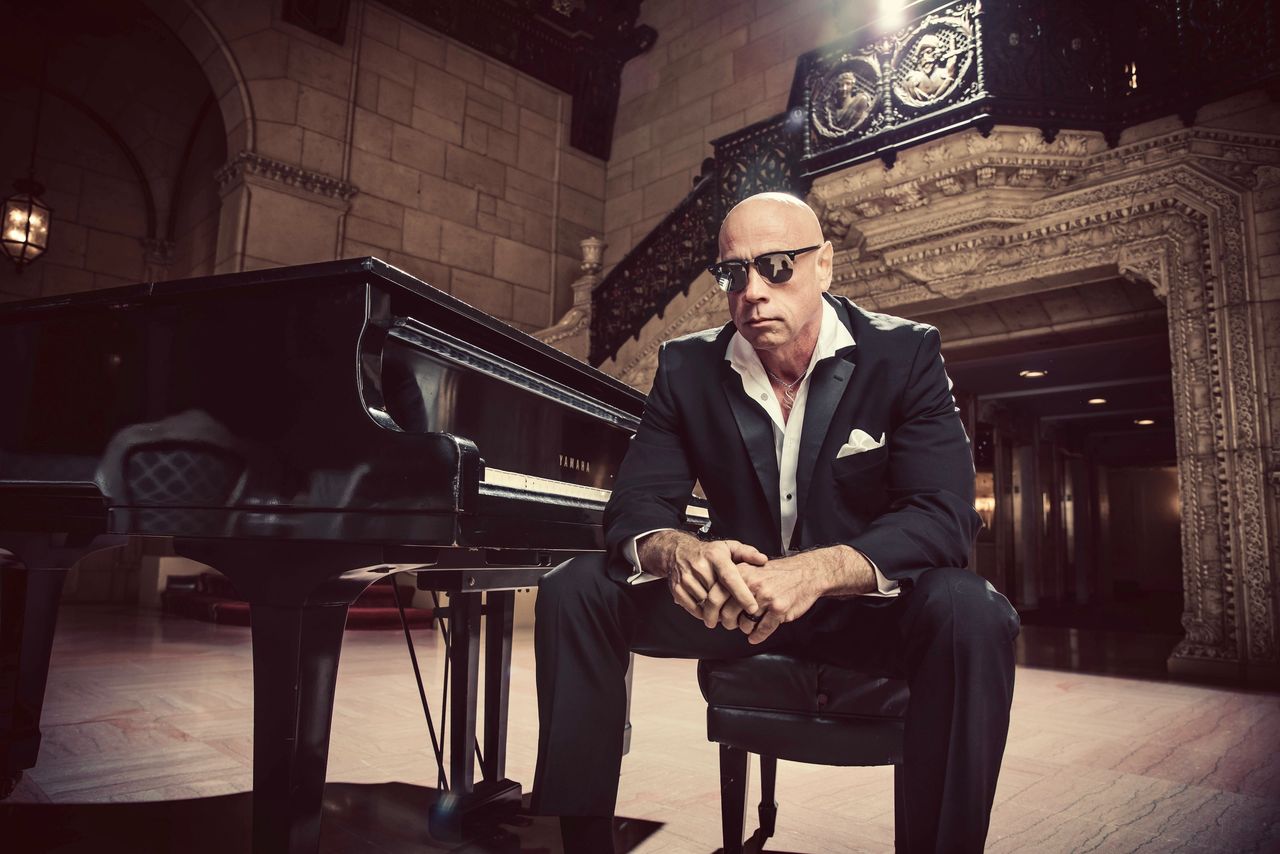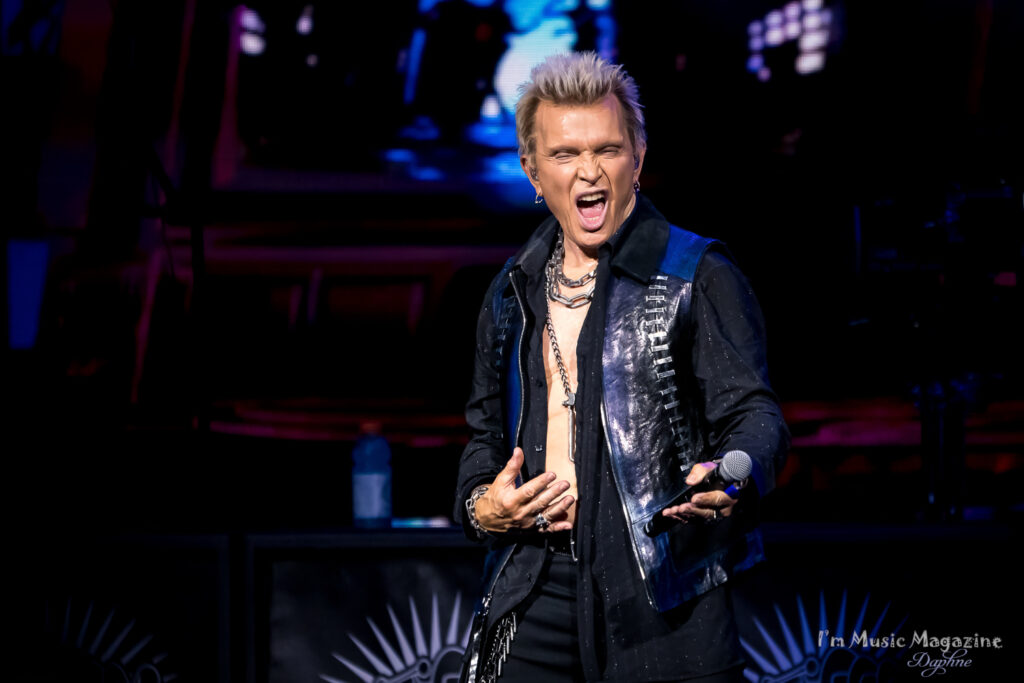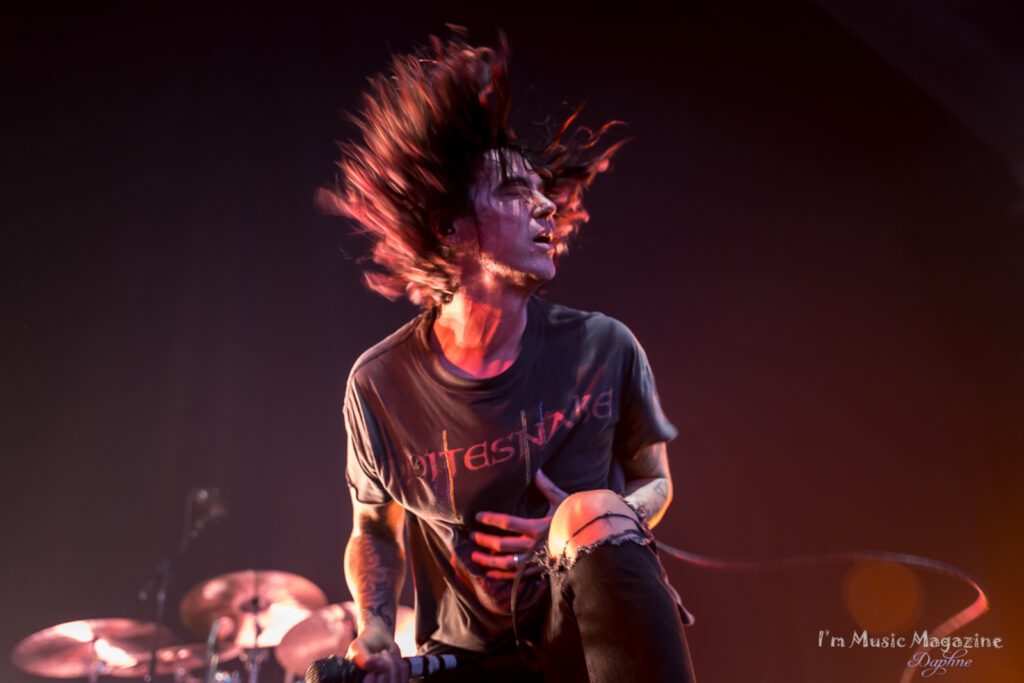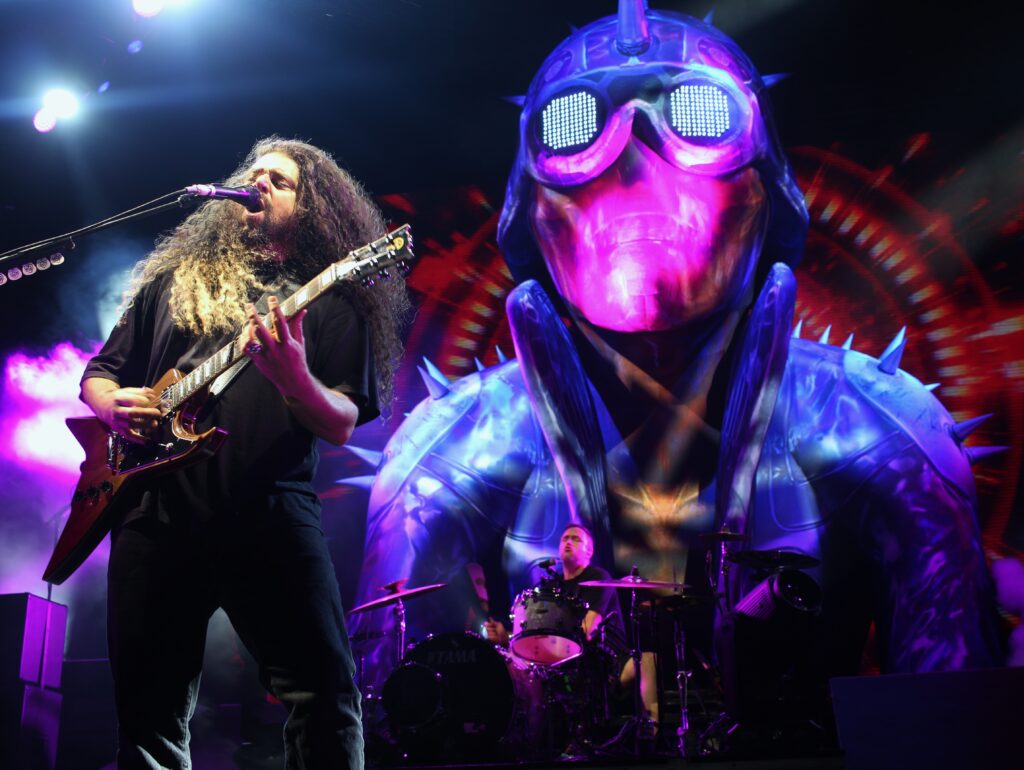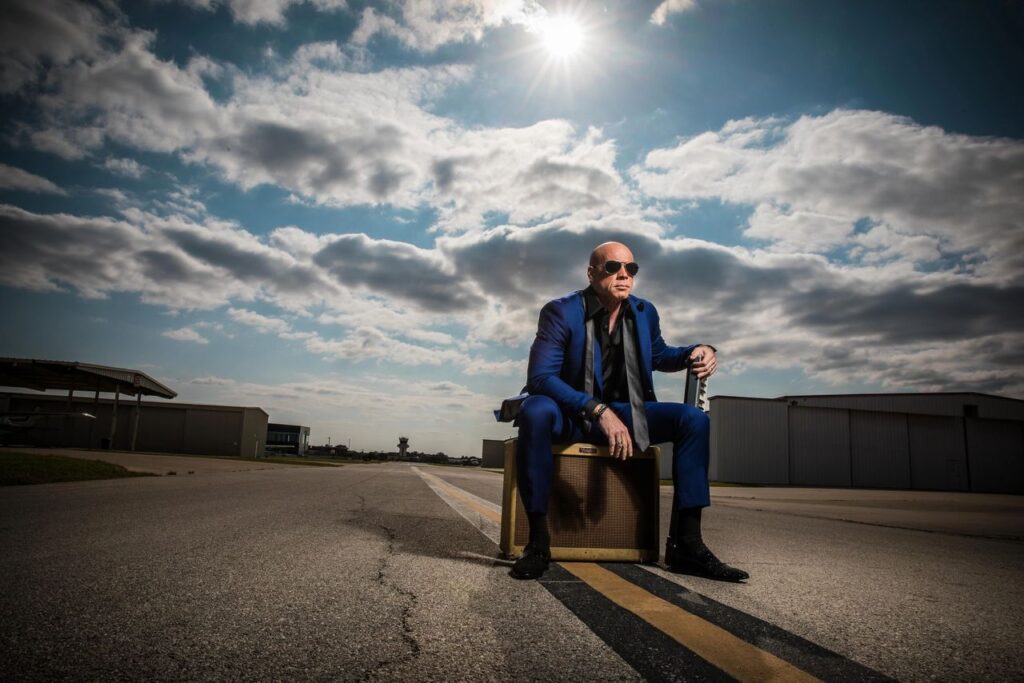
Fresh off a GRAMMY win, composer, arranger, producer, and keyboardist Kitt Wakeley isn’t slowing down. On April 17 he released SYMPHONY OF SINNERS & SAINTS VOL. II THE STORM. The album seamlessly blends rock with symphonic music and features talented musicians including guitar virtuosos, world-renowned orchestras, and vocals from some of the finest choirs across the globe.
The first single off the album, “Paganini’s Storm,” features eye-watering guitar playing by Nuno Bettencourt and sets the expectation for the rest of the album high — Wakeley delivers.
I’m Music Magazine’s Michael Praats had a chance to catch up with Wakeley for a bit of Q&A to find out more about the man behind the music, covering Led Zeppelin’s most famous ballad, and working with so many talented musicians.
Musicians featured on the album include Nuno Bettencourt (Extreme), strings from the London Symphony Orchestra (John Williams, Luciano Pavarotti, Peter Gabriel, Andrea Bocelli), and the London Voices choir (Paul McCartney, Luciano Pavarotti, the Hunger Games series). Joe Satriani, Nita Strauss (Demi Lovato, Alice Cooper), Orianthi (Alice Cooper, Richie Sambora, RSO), Kenny Aronoff (John Cougar, Joe Satriani), the Royal Philharmonic Orchestra, the Macedonian Symphony Orchestra, and the Macedonian Choir.
You just came off a GRAMMY win for An Adoption Story, congrats on that! It’s a cliché question but can you talk about that experience and winning that award? Can you talk about the inspiration for the album?
Kitt Wakeley: Thank you! I appreciate the kind words. It’s been an amazing time for me, my music and career in general.
As far as the experience, I wish I could put it into words. As musicians, we work so hard on our art and passion. We hope that others will appreciate our art as much as we do and winning a Grammy was the pinnacle of others appreciating my creativity and passion.
I didn’t expect it to win. I had no major label pushing me and no one without a label had ever won in my category before. However, during the show, as they were announcing the nominees in my category, I heard everyone cheering as they called my name.
That was the first time I thought that I might have a chance. A few seconds later, when they actually announced me as the winner. I was in complete shock. From that moment until the next day, life was a complete blur of press, afterparties and moments with friends and family. I genuinely remember very little. Fortunately, there’s video!
I hope it doesn’t come across as shallow. I’d be embarrassed if it was, but there’s no other feeling like it.
You released Symphony of Sinners and Saints in 2021 and have a follow up album releasing later this month. Symphony of Sinners and Saints is a concept album and the duality of the title alone suggests to me that is the concept behind the album — but I’d love to hear from you about the concept and what the album represents.
KW: You’re correct, there are numerous layers to the concept. First, as you’re probably aware, I perform with a rock band and orchestra. The mere thought of orchestral players with a rock band conveys Sinners and Saints. I think most of us consider rock bands as the bad boys and rebels. Whereas orchestral players have a more mature, sophisticated vibe about them. “Sinners and Saints” is the representation of the two elements.
You can’t have the ying in this world without the yang. It’s the combination of these two elements that become the building blocks of our lives. In the simplest of terms, how many times have we experienced a breakup with a significant other, but we end up meeting someone else even better. Or, if we lose a job, we get a better one down the road. Or, how many times can you be told “no” before someone says “yes.” The journey of my music career is no different. So many times I’ve heard the word no or that my music wasn’t right fit or that it wasn’t any good. Yet those negative comments only made me want to work harder. I’d like to think all the adversity comes with some very special moments.
Even when you listen to each song that I write, you will hear the contrast between a negative, dark undertone and sense of euphoria and triumph.
Is the follow up album also a concept album? If so, is it expanding on the same emotions? What’s the importance of ‘The Storm’ in the Part II release?
KW: The Storm is a continuation of Volume I. I still had more to say with this style of music. I wanted to make sure I got it all out of my system before moving on to my next project. Don’t get me wrong, orchestral rock will always be at the forefront of my writing and recording, but it may not be in the same exact lane as the Volume I and Volume II.
With Volume II, I had more to say with other guitarists such as Nuno Bettencourt, Nita Strauss, Orianthi and yes, Satriani. I didn’t want these songs sitting on the shelf or hard drive.
Your albums feature some incredible musicians, working with such talented artists has to be an exhilarating experience, can you talk about the collaborative efforts between yourself and the artists on the album?
KW: I’m not even sure where to start. When at Abbey Road, I have the London Symphony, one of the finest orchestras in the world, in one of the most legendary studios. That alone sets the tone for great expectations. Therefore, I don’t want to take a step backwards when adding other players. Rather, I want the same level of players on all the other parts.
I used to get intimidated by working with all of the high caliber musicians, but as they treated me as an equal and gave feedback about the music, I gradually realized I belonged in these circles. In fact, I often tell people that the greatest gift from all of these incredible individuals wasn’t the music. Rather, it was the kindness, the spirit of working with one another, and their affirmation that gave me the confidence, which has bloomed into so many successes.
Speaking of the artists featured, when you are composing your music do you ever have anyone specific in mind you write parts for? Forgive my ignorance but as someone whose musical talent extends to Hot Cross Buns on the recorder in third grade I just don’t know how these albums come together. Just as one example, Nuno Bettencourt’s playing Paganini’s Storm is perfect, when you start an album like this do you already have artists who have agreed to work on the album or is that something that comes after the music is composed?
KW: I think we all had our ventures with the recorder in elementary school!
Once I’m done writing all the orchestral parts, I focus on the drums, bass, rhythm guitar and potential melodies of the lead guitar. That’s when I start to think of what kind of guitar tone and style would work best. For example, when I was pondering the right guitarist for Paganini’s Storm, Nuno was the first person that came to mind. I remember what he did with Beethoven’s Turkish March with the Extreme song “Play with Me”. He was the perfect choice for a spin on Paganini.
Nuno is brilliant at bringing in different colors and vibes with a song that many musicians may not have considered. He listens to the notes and chords, then locks in on what to bring out to the forefront.
When I decided to cover Stairway to Heaven, I knew that Orianthi had been recording some cool contemporary blues songs, so I wanted that vibe and tone on the cover. She didn’t disappoint! Her style and playing were perfect for setting the tone for the song.
MVP and Closure needed a gritty vibe that only Nita Strauss can bring. She is a rock guitarist all the way! The moment I was finished with those songs, I was sending out emails and demos for her to consider. She was awesome!
Then there’s Satriani. He brings a totally different vibe to a song. He’s a genius at knowing when to feature a great melody and solo, but letting the orchestra have its space as well. I don’t know how to explain it, but I know exactly which songs I want him to play on and sometimes I write music specifically for Joe to play. The results are amazing.
Most people miss the crucial reason I choose these guitarists. Many claim that I merely use these guitarists for their names. However, don’t forget, we’re working with the London Symphony and the acoustics of Abbey Road Studios. The parts that I compose are complex and require a lot of detailed technique. Therefore, I need guitarists who have the ability to play meticulously clean, in time and in tune. There’s no room for error when trying to get all 300 tracks to gel. Being slightly off in any way can ruin the parts played by the symphony, therefore, I need the best of the best.
I still have other guitarists that I think are perfect for upcoming songs.
Blending such different genres of music is an impressive feat that is not easily done. What inspires you to create such a delicate composition juxtaposed with heavy sounds?
Rock music has always been my favorite. It’s one of the most powerful stimulants to our senses. When at a sporting event, rock music can inspire 60,000 people to come out of their seat to cheer on their favorite team. When you work out, rock music can give you that extra energy to do more. People leave concerts in complete euphoric bliss. After all, they call a great parting spot “rock star parking”, because it’s the coolest spot in the lot.
Orchestral music is obscenely powerful. It hits the human senses in a totally different way. Would the drama in The Godfather be the same without the orchestral theme? Would Rocky be as inspiring without his notable theme? We all have a sense of adventure when hearing the theme to Raiders of the Lost Ark and the moment we hear the first few French horn notes, we know Star Wars is getting ready to take the screen. Superman and Batman movies wouldn’t be the same without their own themes. In fact, many people recognize the music before they recognize other elements to the movie.
Pure magic happens when you combine these two genres.
If you could collaborate with any artists working today, who would you want to do that with?
KW: The list is long. There are other guitarists that I want to work with for sure! But I’d love to write orchestral tracks for rappers or add orchestral elements to many of the current rock bands and pop artists out there. When I hear their music, I get excited about what it would sound like if I could add orchestral elements.
Obviously, there are the legends in music such as Paul McCartney, Elton John, and John Legend. Give me an Ozzy, Motley or Metallica track and I’d be making some of the coolest tracks ever. My hope is with Billboard #1’s on my resume, winning a Grammy and working with the artists that I have, that other well-known artists will reach out to collaborate.
In terms of touring and live performances, do you have anything planned for the near future?
KW: The whole Grammy campaign and win pushed things like touring to the back burner. However, we’re working on budgets and locations now. I’d love to sell out Carnegie Hall again and I’ve got a lot of people pushing me to do a major show at the Hollywood Bowl, and my hometown of Oklahoma City is on the schedule for sure. I’m eager for Austin, Nashville and other major cities as well. It’s going to be a lot of fun.
The Stairway to Heaven cover is beautiful as well, can you talk about why you chose to reimagine that song, which is obviously one of the most famous songs in Rock n Roll history. It’s been covered plenty, but I really don’t know of many renditions that I would say are so well done. You stayed true to the song obviously but really put a unique spin on it which is impressive to hear.
KW: I knew this one would be risky, but my goal wasn’t to merely rehash the song. That’s already been done several times. None of us are going to match the original. Although Heart covering the tune at Lincoln Center was amazing.
My goal was to put my spin, using my signature approach to the song.
In a way, you can blame Rick Beato, a genius in his own right. I’m addicted to his popular YouTube channel. The song Stairway was the topic on one of his shows. Would it be a hit today? Most songs these days are 3-4 minutes long at best. Stairway was over 8 minutes long and had one chorus! Yet, it is one of the most iconic songs in history. So, I set out to arrange and produce a more secular version of the song for today’s standards. Intro, verse, chorus, bridge, chorus and guitar solo. And it was less than 4 minutes long.
Whether I produced a worthy cover or not is subject to opinion, which makes it that much more fun. I can tell you that Ori and I had a blast. The London Symphony was loving every minute of it and everyone else who picipated loved the “tip of the hat” from an orchestral perspective to one of the greatest bands and songs of all time.
Is there anything else you want people to know about your new album, your music in general, or anything else?
KW: I’ve been blessed on so many levels. I love to make music and I have so much more to offer. Volume II is as much fun as the first Sinners and Saints album. If you love to listen to great guitarists, then this will be ear candy. If you want a totally different spin on rock music, which includes the power of an orchestra, you’ll be putting the album on repeat.
For more information, visit www.kittwakeley.com
Interview by I’m Music Magazine Photographer/Writer Michael Praats
